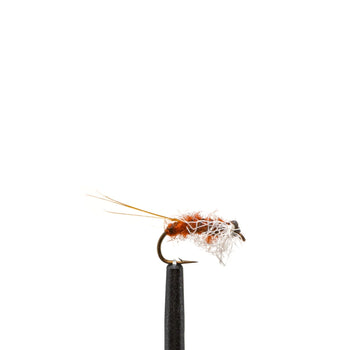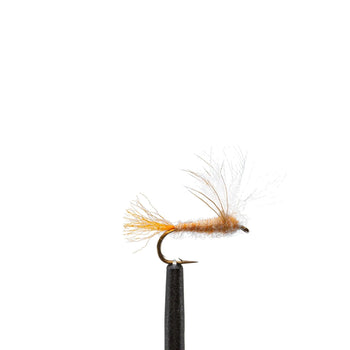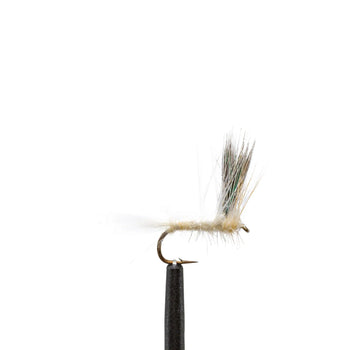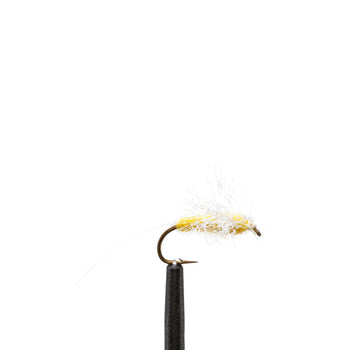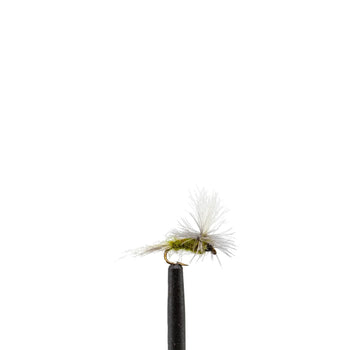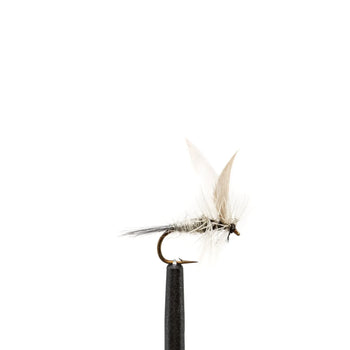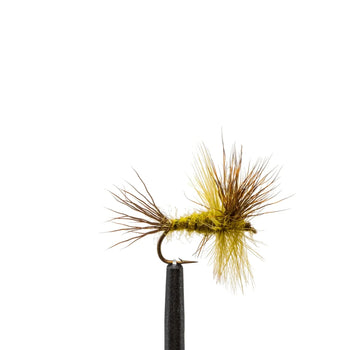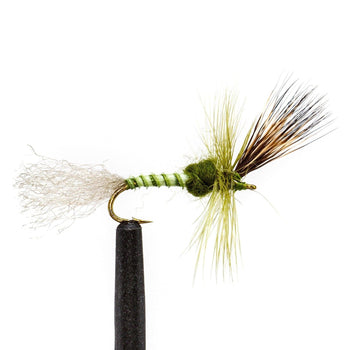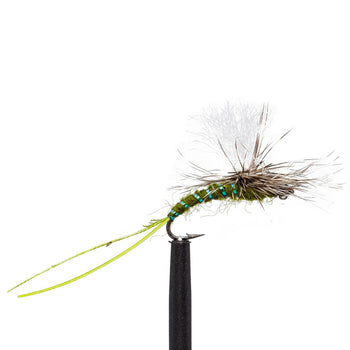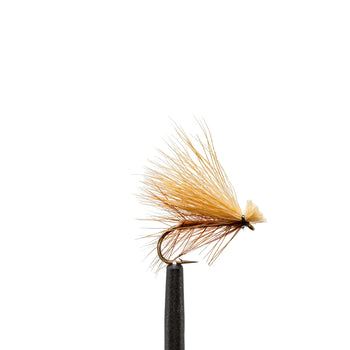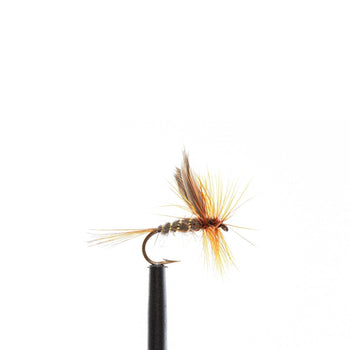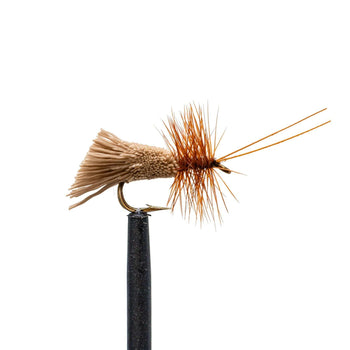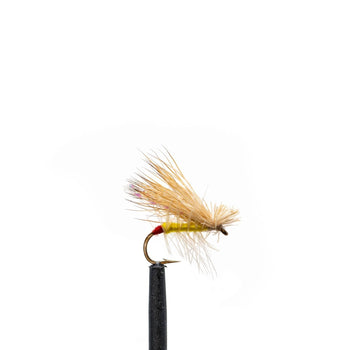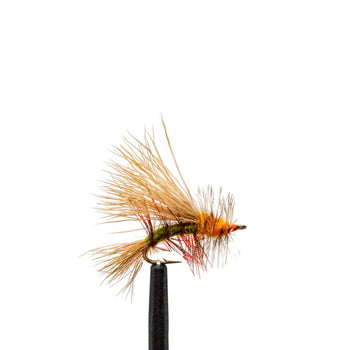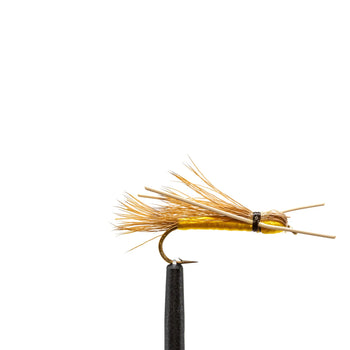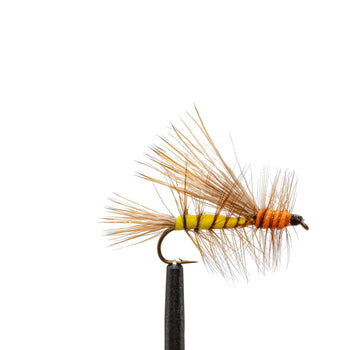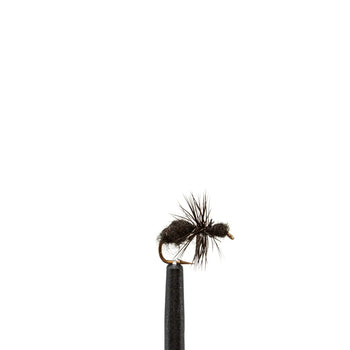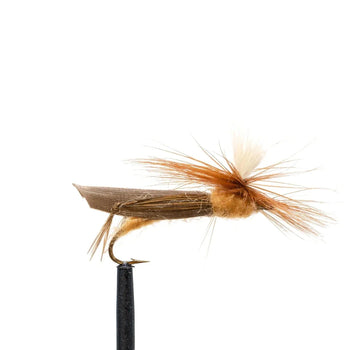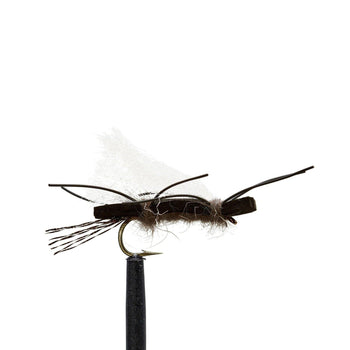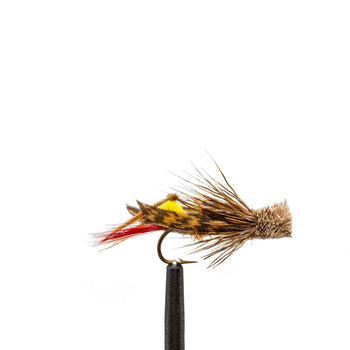JHFLYCO Dry Fly Guide: Top Gear, Proven Techniques & Seasonal Hatches
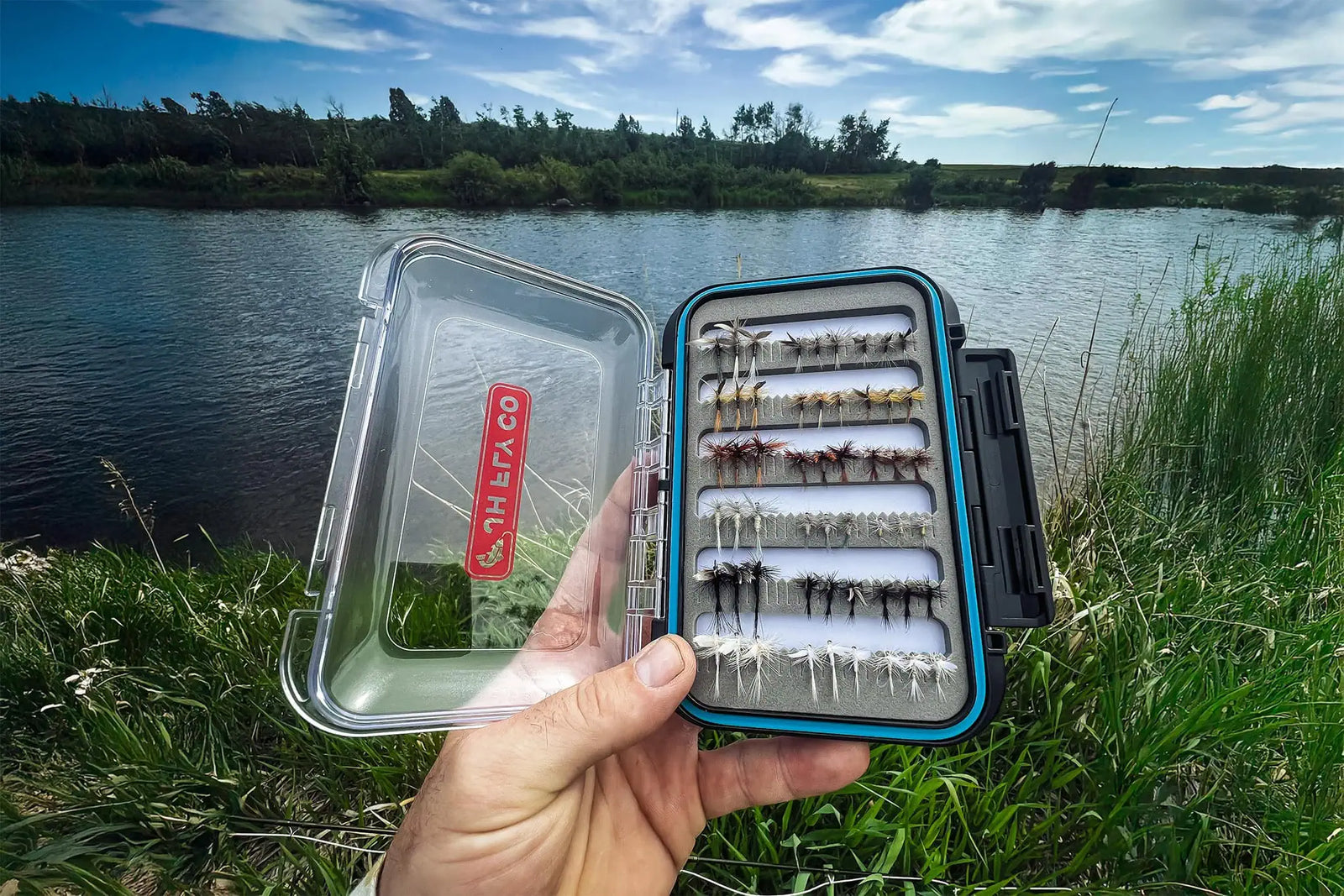
Whether it’s a subtle sip or a splashy take, there’s nothing quite like the thrill of watching a trout rise to a dry fly—especially when it’s the result of the perfect cast, a drag-free drift, and the right pattern at the right time. For many anglers, dry fly fishing is the pinnacle of the sport—the perfect combination of skill, timing, and reward. As we enter the heart of summer, trout are increasingly focused on surface insects, making this the ideal time to refine your dry fly game. Whether you're new to fly fishing or a seasoned veteran, this deep dive into dry fly techniques, seasonal hatches, and top-performing patterns will help you make the most of every surface opportunity.
Why Dry Fly Fishing Matters
Dry fly fishing isn’t just about aesthetics—although few things compare to seeing a trout sip your fly off the surface. It’s a strategic and rewarding way to fish, requiring close observation, precise presentation, and a light touch. Dry fly fishing sharpens your awareness, forcing you to read water, anticipate hatches, and match your fly to the behavior of rising fish. It's also incredibly fun, offering a visual, interactive experience that keeps you engaged every step of the way.
Some of the best days on the water happen when you hit a good hatch and dial in the perfect presentation. Learning how to fish dries opens up opportunities on calm mornings, cloudy afternoons, and golden evenings when trout feed on top.
Essential Dry Fly Techniques
Mastering dry fly fishing starts with understanding how to present your fly in the most natural and convincing way possible. Unlike nymphing or streamer fishing, where success often happens below the surface, dry fly tactics demand finesse, timing, and a close connection to the rhythms of the river. From achieving a drag-free drift to spotting subtle takes, the techniques you use on the surface can make or break your success. In this section, we’ll break down the fundamentals to help you get more confident—and more consistent—when fishing dries.
Presentation & Drift
The key to dry fly success is a natural drift. Your fly should float downstream as if it were a real insect—without drag, unnatural movement, or wake. To achieve this, aim for a soft, accurate cast and allow slack in your line to account for conflicting currents. Mending upstream can help extend your drift and keep the fly moving naturally.
Line Control & Casting
Good dry fly casting means accuracy and subtlety. You don’t need long casts—often 20 to 30 feet is plenty—but you do need to land softly. Use reach casts, parachute casts, or slack-line casts to position your fly well and give it time to drift drag-free. High-stick techniques or downstream presentations can also be effective in pocket water and tight seams.
Detecting the Strike
With dry flies, the strike is visual—but that doesn’t mean it’s always obvious. Trout may sip, swirl, or subtly nose the fly before eating. Keep your eyes on the fly at all times, and set the hook with a quick wrist lift the moment you see a take. Avoid yanking too hard—gentle precision works best.

Gear for Dry Fly Success
Having the right gear is essential for effective dry fly fishing. While trout will always be selective about what they eat, your ability to present the fly well depends heavily on your rod, reel, line, and terminal tackle. Dry fly fishing typically calls for lighter setups that allow for subtle presentations and precise control—especially when targeting rising fish in calm or clear water. In this section, we’ll walk through the ideal rod weights, reel choices, fly lines, and other accessories that give you the best chance of fooling trout on the surface.
Rods
A 3WT to 6WT fly rod is ideal for most dry fly fishing scenarios. Lighter 3–4WT rods offer exceptional touch and finesse on smaller streams or for presenting tiny flies. A 5–6WT rod provides better control and distance on bigger rivers or breezy days, especially when casting larger patterns like hoppers or stimulators.
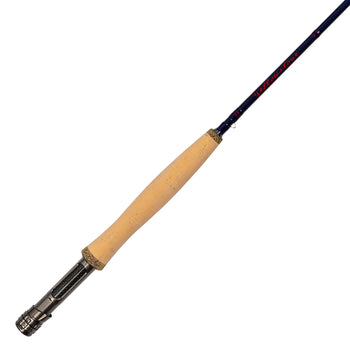
|
 |
 |
| Yellowstone Signature Fly Rod | Yellowstone II Fly Rod | Silvertip Fly Rod |
Recommended:
- Yellowstone Signature Fly Rod – 4-Piece Fast Action – built on a fast-action graphite blank for crisp, accurate casting and long-distance control. Ideal for big rivers and larger dry flies.
- Yellowstone II Fly Rod – 4-Piece Fast Action – smooth, responsive action with a forgiving taper, perfect for delicate dry fly presentations on spring creeks and small streams.
- Silvertip 9' 5WT Fly Rod – a budget-friendly performer with solid action and dependable build, great for anglers who want versatility without sacrificing quality.
Reels
Choose a lightweight, balanced reel that matches your rod weight (e.g., a 5WT reel for a 5WT rod). While drag systems aren’t critical for dry fly fishing, a smooth startup and reliable performance are still important—especially when a big trout takes off downstream.
Recommended:
- Yellowstone Signature Fly Reel – lightweight, durable, and perfectly matched to our Signature series rods. Features a sealed disc drag and large arbor for smooth line pickup.
- Yellowstone Grizzly Fly Reel – 5/6WT – rugged CNC-machined aluminum construction with a strong disc drag and ergonomic knob. Excellent value for performance and style.
Fly Line
Use a weight-forward floating line that matches your rod’s weight rating. Presentation-style lines (with a more delicate front taper) can help with softer landings, while standard all-around lines work well for general use. Lighter lines (3–4WT) are great for finesse; heavier lines (5–6WT) are better for wind or longer casts.
Recommended:
- Silvertip Floating Fly Line – a versatile all-around line with excellent shootability and balanced taper for both beginners and experienced anglers.
- Silvertip Double Taper Fly Line – designed for precise roll casting and delicate surface presentations. Ideal for spring creeks, slow water, and traditionalists.
Leaders & Tippet
Use a long, tapered leader—typically 9 feet. In low, clear water, a 9-foot leader with a 5X or 6X tippet helps avoid spooking fish. For faster water or larger dries, a 9-foot 4X setup is often perfect. Fluorocarbon tippet sinks faster, so stick to monofilament for true surface presentations.
Recommended:
- JHFLYCO Monofilament Tapered Leader – 3-Pack – pre-tapered leaders for smooth turnover and natural drifts, available in a range of sizes.
- JHFLYCO Monofilament Tippet – 50m Spool – strong, knot-friendly mono that floats well and works perfectly for surface flies and small dries.
Floatants & Accessories
Having the right floatant is crucial. Silicone gel, powders, and shake desiccants help keep your fly riding high. Always carry a small towel or amadou patch to dry your fly before reapplying floatant. Don’t forget polarized sunglasses and a good hat—they help you spot rises and reduce glare.
Recommended:
- JHFLYCO Caddy Sak with 0.5oz Gel Flote – a convenient, ready-to-fish setup that includes our high-performance gel floatant in a secure caddy. The gel formula is temperature-stable, non-silicone-based, and perfect for keeping dry flies riding high throughout long drifts. The included Caddy Sak clips easily to your pack or vest for quick access on the water.
- JHFLYCO Spray Float – a quick-apply floatant for larger dries and hoppers
Classic Dry Flies: Time-Tested Staples for Every Fly Box
These legendary dry flies have stood the test of time on trout waters around the world. Keep a selection of these proven patterns in your box to cover everything from hatch matches to blind prospecting. Other classic pattens that are included in the hatch guide include the Elk Hair Caddis, Blue-Winged Olive, Pale Morning Dun, and Parachute Hopper.
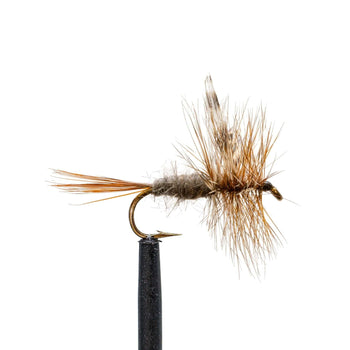
|
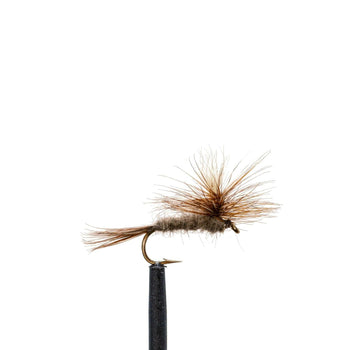
|
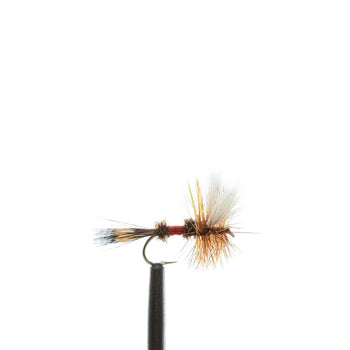
|
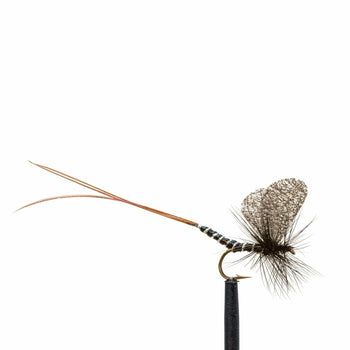
|
| Adams | Parachute Adams | Royal Wulff | Classic Mayfly – Various Colors |
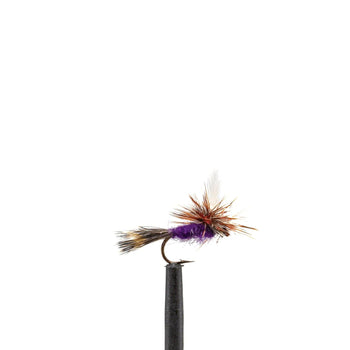
|
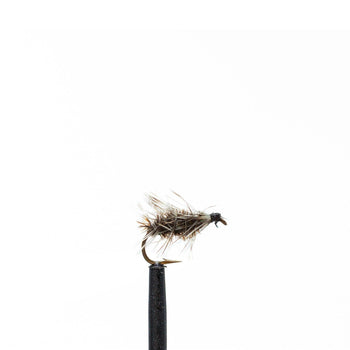
|
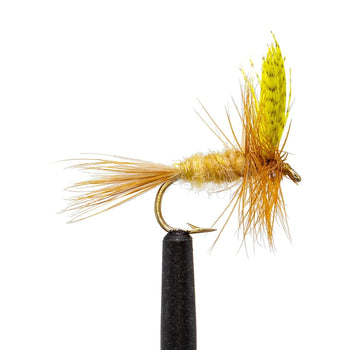
|

|
| Purple Haze | Griffith’s Gnat | Cahill - Light & Dark | Coachman |
Adams (Sizes 12–20): A must-have mayfly imitation with a gray body and grizzly hackle. Versatile, effective, and ideal for matching a range of mayflies in riffles and pools.
Parachute Adams (Sizes 14–20): A lower-riding variation of the classic Adams, featuring a visible white post and improved surface profile. Excellent for slower water and finicky trout.
Royal Wulff (Sizes 10–16): A high-floating attractor fly with royal red, peacock, and calf tail wing accents. Perfect for fast water, pocket water, or when fish aren’t keying on specific hatches.
Classic Mayfly – Various Colors (Sizes 12–18): A traditional upright-wing mayfly imitation available in black, brown, olive, and cream. Matches a wide range of natural duns throughout the season.
Purple Haze (Sizes 12–18): A modern attractor fly inspired by the Parachute Adams, featuring a vibrant purple body and parachute post. Especially effective during mixed hatches.
Griffith’s Gnat (Sizes 18–22): A midge cluster pattern with peacock herl and grizzly hackle. Use it during heavy midge hatches or as a trailing dry in tandem setups.
Cahill - Light & Dark (Sizes 12–18): A time-tested mayfly imitation available in both light and dark variations to match seasonal hatches. The Light Cahill is ideal for spring and early summer, while the Dark Cahill works well during overcast days or later in the season. Both versions offer excellent visibility and floatation, especially in slow to moderate water.
Coachman (Sizes 12–16): A historic fly with peacock herl body and white wings. Best used as a searching pattern or in creeks with mixed insect activity.
📌 Pro Tip: Stock these classics in multiple sizes and rotate between attractors and naturals based on the season, water clarity, and rise behavior.
Fly Selection by Hatch
Understanding which insects are hatching—and when—is half the battle. Let’s break down some of the most common summer hatches and the dry flies that match them best.
Pale Morning Dun (PMD)
Pale Morning Duns are one of the most reliable and widely distributed summer mayfly hatches in the West. These light-bodied mayflies typically emerge from late morning to early afternoon, especially on warm, sunny days from late spring through midsummer. Ranging in pale yellow to rusty pink hues, PMDs hatch in abundance in riffles, tailouts, and slower flats—drawing trout into consistent surface feeding patterns. Fish can be selective during a PMD hatch, often refusing high-floating duns in favor of cripples, emergers, or spinners. Matching the hatch and the feeding behavior is critical for success.
- Rusty Spinner (Sizes 16–20): A versatile spinner pattern that covers a wide range of mayfly species, especially PMDs. Its slim, rusty-brown body and outstretched wings mimic spent adults perfectly. Deadly at dusk when trout sip gently in flat water.
- Sparkle Dun (Sizes 16–18): With its trailing shuck and upright wing, this fly imitates a freshly emerged dun perfectly. Great for sipping fish during an active hatch.
- PMD Parachute (Sizes 16–18): A highly visible and effective pattern that floats well and imitates the classic upright dun silhouette. Ideal for riffles and broken water.
- PMD Spinner (Sizes 16–20): This pattern imitates mayflies that have completed mating and lie flush to the surface. Excellent for targeting trout at twilight or on calm water.
📌 Pro Tip: PMD hatches are often subtle—look for soft rise forms and fish feeding just below the surface. Try cripples or emergers before switching to duns.
Blue-Winged Olive (BWO)
Blue-Winged Olives are one of the most important and consistent hatches in trout streams across the country. These small, olive-colored mayflies are especially active on overcast days and during cooler periods in the summer, often emerging in the late morning through afternoon. BWOs hatch in riffles, seams, and flats—and trout feed on them greedily when they appear. These bugs are usually in the 16–22 size range, so delicate presentations and thin tippet are essential.
- Blue-Winged Olive Parachute (Sizes 16–22): A classic BWO pattern with high visibility and excellent floatation. The upright post and parachute hackle create a natural footprint on the water. Great for riffles and broken water.
- Blue Dun (Sizes 16–20): A traditional pattern with a slim, slate-colored body and soft hackle wings that closely mimic adult BWOs. Best in slower currents and flat water.
- Blue-Winged Olive Wulff (Sizes 16–20): A high-floating attractor-style BWO with a bushier silhouette, perfect for faster water or windy conditions where visibility is a challenge.
- Blue-Winged Olive (Sizes 16–20): The standard BWO imitation with an olive body and dun upright wings. Simple and highly effective during steady hatches or as a searching pattern on cloudy days.
📌 Pro Tip: BWO hatches often bring selective trout to the surface. If you're getting refusals, switch to a smaller size or try a cripple/emerger pattern fished in the surface film before going back to a dun.
Green Drake
Green Drakes are among the largest and most anticipated mayfly hatches of the year. These big-bodied insects hatch in late spring through early summer, often in the afternoons or evenings following rain or overcast conditions. Their sheer size and lumbering emergence make trout aggressive and less selective—this is one hatch where even larger fish will rise boldly to the surface. Target seams, soft edges, and back eddies where trout lie in wait for these easy meals.
- Green Drake (Sizes 10–12): A traditional full-bodied pattern with an olive-brown body and large upright wings. Fish this over riffles or drifting along bubble lines during the peak hatch.
- Green Cripple Drake (Sizes 10–12): Designed to imitate a struggling emerger, this pattern rides low in the film and is deadly when fish are ignoring high-floating duns.
- Extended Body Green Para Drake (Sizes 10–12): With a segmented extended body and parachute post, this fly offers superb visibility and realism—especially effective in flat water.
- Green Para Drake (Sizes 10–12): A clean silhouette with an olive body and parachute hackle that performs well in varied water conditions.
📌 Pro Tip: When trout key in on Green Drakes, presentation trumps perfection. These bugs are clumsy and slow—don't be afraid to let your fly drift longer or twitch slightly to entice a strike.
Caddisflies
Caddisflies are one of the most consistent and abundant insect hatches across North American trout streams, with activity peaking from late spring through early fall. Unlike mayflies, which hatch in brief windows, caddis can emerge throughout the day and into the evening. Adults are active, fluttering on the surface, skating, and even diving underwater to lay eggs—often triggering aggressive surface takes. Caddisflies tend to hatch in faster water: riffles, seams, and pocket water. Trout will key in on both emerging and egg-laying adults, so a variety of dry fly presentations can be effective.
- Elk Hair Caddis (Sizes 12–18): A high-floating classic that imitates adult caddis with a bushy, buoyant profile. Great for fast water and aggressive strikes, especially in tan or olive variations.
- Light Bucktail Caddis or Dark Bucktail Caddis (Sizes 12–16): Sleek, realistic profiles and wing shapes make these excellent for low-light conditions or pressured fish. The dark version shines on cloudy days or darker water; the light version is ideal on bright summer evenings.
- Gold Ribbed Hare's Ear Dry (Sizes 12–16): A unique crossover dry that mimics the rough, mottled appearance of emerging caddis adults. Works well in riffles or fished skittered across the surface.
- Goddard Caddis (Sizes 10–16): This densely packed deer hair pattern floats high and is excellent for rough water. Its compact, buggy silhouette is irresistible to trout feeding on egg-laying caddis.
📌 Pro Tip: Try twitching or skating your caddis dry fly slightly during the drift—unlike mayflies, caddis movement often provokes more strikes than a dead drift alone.
Stoneflies
Stoneflies are some of the largest aquatic insects trout encounter, and their hatches can bring explosive topwater action—especially in the early to mid-summer months. Golden Stones and Yellow Sallies are the key players during this time, with hatches peaking in June and July across many Western rivers. Stoneflies don't hatch in the middle of the river like mayflies; instead, they crawl to shore and emerge on rocks or vegetation, making banks, pockets, and riffles prime spots to target.
Because of their size and tendency to skate on the surface, stonefly patterns should be high-floating and durable enough to handle turbulent water and aggressive strikes. Cast tight to the bank, dead drift through fast seams, or twitch the fly to mimic a struggling adult.
- Yellow Sally (Sizes 14–18): A compact, lightly dressed dry fly that imitates the small yellow stoneflies of summer. Ideal for pocket water and shallow riffles where trout rise eagerly. Fish it with a 5X tippet and a dead drift along grassy banks or rocky edges.
- Olive Stimulator (Sizes 10–16): A reliable summer dry fly that mimics adult stoneflies with a natural look and excellent floatation. The olive body is ideal for clear water and matches small summer stoneflies like Yellow Sallies. Fish it solo or as a dry-dropper rig in riffles, seams, and pocket water.
- Madam X (Sizes 10–14): With a bullet head, rubber legs, and deer hair wing, this fly imitates large stoneflies and hoppers alike. Its buoyant body makes it excellent in freestone rivers or fast-flowing runs.
- Yellow Foam Stimulator (Sizes 10–16): A foam-bodied take on the classic, this version floats all day and is ideal for fast riffles and pocket water. Durable, visible, and deadly during the height of golden stone activity.
📌 Pro Tip: Stonefly hatches are best fished from the edges in. Don't overlook tight banks, grassy margins, or rocky outcrops—these are the zones where adult stoneflies gather and trout patrol for easy meals.
Terrestrials
When aquatic hatches slow down in the heat of summer, trout often turn their attention to terrestrial insects—those land-based bugs like ants, beetles, and grasshoppers that accidentally end up in the water. These larger, protein-rich meals can trigger aggressive takes, especially on breezy afternoons when terrestrials are blown into the river. Fishing terrestrials is exciting, visual, and often the most productive way to spend a summer day on the water.
- Black Ant (Sizes 12–18): A simple but deadly pattern, the Black Ant is a must-have when fish are feeding on drifting ants. It excels during ant falls or in calm water near grassy banks. Dead-drift it through slack water and margins, or let it gently plop into the current under overhanging trees.
- Parachute Hopper (Sizes 10–14): This hopper features a high-vis post for easy tracking and a realistic leg and body profile. It's an ideal choice for windy afternoons, grassy banks, or any day when trout are on the lookout for terrestrials.
- Chubby Chernobyl - Black (Vader) (Sizes 10–12): A high-floating, durable attractor pattern that mimics large beetles, ants, or even small hoppers. The black foam body and rubber legs create a bold silhouette perfect for shaded runs and pocket water.
- Dave's Hopper (Sizes 8–12): A classic hopper pattern with a deer hair body that floats well and casts great. Fish it during late summer when grasshoppers are abundant near riverbanks. Twitch it occasionally to imitate a struggling hopper.
📌 Pro Tip: Windy afternoons are prime time for terrestrials. Don't be afraid to let your fly land with a bit of splash—trout expect a clumsy landing and will often rush over for a look.

Common Mistakes to Avoid
Even experienced anglers can struggle with dry fly fishing if a few key fundamentals are overlooked. From poor presentation to using the wrong tippet size, small mistakes can mean the difference between a fishless day and a perfect drift that gets hammered. In this section, we'll cover some of the most common errors that can sabotage your dry fly success—and how to fix them.
- Drag on the Fly: Even a slight unnatural movement can turn off picky trout.
- Too Heavy Tippet: Avoid thick tippet with small flies—it affects drift and visibility.
- Ignoring Fly Size: Match not just color, but also size and silhouette.
- Overcasting: Fish often lie close. Long casts can spook them or introduce drag.
Taking It to the Surface: Final Thoughts
Dry fly fishing rewards patience, attention to detail, and time spent observing the water. From the right fly choice to a drag-free drift, every element matters. Whether you're hitting the water at dusk during a heavy hatch or prospecting shady banks with an ant, the surface game is always worth the effort.
Want to build your dry fly box or gear up with the right tools for success? Browse our curated dry fly collection and explore expert-approved patterns, rods, leaders, and accessories that help you fish smarter and cast better.
Explore Our Dry Fly Collection
Related Articles:
- Mastering the Mayfly Hatch: Fly Patterns, Timing & Tactics for Success
- Fly of the Month: The Pale Morning Dun (PMD)
- Fly of the Month: The Blue-Winged Olive (BWO)
- Master Your Drift: Mending Techniques for Natural Fly Presentation
- Top 5 Summer Hatches: What Flies You Need in Your Box
- Casting into Summer: An Early Season Fly Selection Guide


